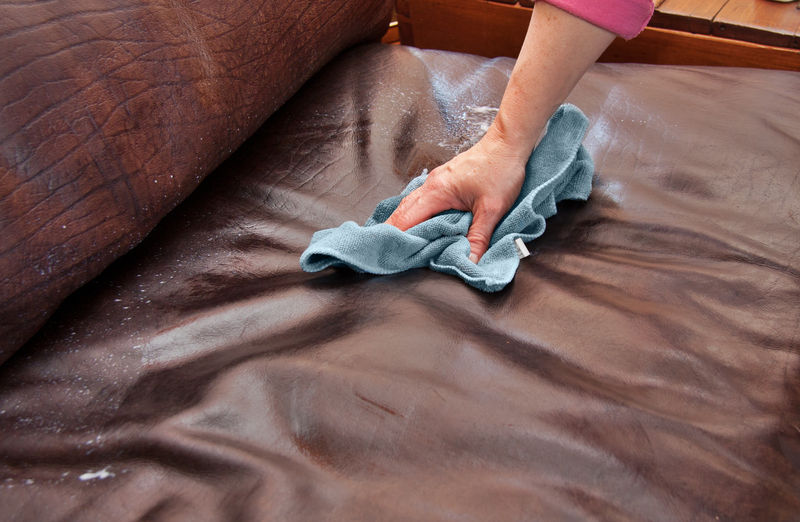Removing Limescale Easily
Posted on 07/09/2025
Introduction
Limescale is a common household issue that many people encounter, particularly in areas with hard water. It forms due to the accumulation of calcium carbonate, a mineral found in hard water. This unsightly and stubborn deposit often appears on faucets, sinks, showerheads, kettles, and even inside washing machines. Not only does limescale detract from the appearance of your fixtures and appliances, but it can also impair their functionality and efficiency over time. Fortunately, removing limescale doesn't have to be an arduous task. With the right techniques and products, you can keep your home sparkling and efficient.

Understanding Limescale
Limescale, also known as calcium carbonate, builds up over time as hard water evaporates, leaving behind tiny mineral deposits. These deposits accumulate and harden, forming the white, chalky substance we recognize as limescale. The primary areas affected by limescale are those where water is frequently used and allowed to sit, such as faucets, showerheads, and kitchen appliances.
Natural Methods for Removing Limescale
1. **Vinegar**: One of the most effective and natural solutions for removing limescale is white vinegar. Its acidic properties help dissolve limescale deposits. Fill a spray bottle with equal parts vinegar and water. Spray the solution on the affected areas, let it sit for about 30 minutes, and then scrub with a brush or cloth.
2. **Lemon Juice**: Another natural limescale remover is lemon juice, which contains citric acid. Apply fresh lemon juice to the limescale-affected area, let it sit for an hour, and scrub it away. Lemon juice not only removes limescale but also leaves a pleasant fragrance.
3. **Baking Soda and Vinegar Paste**: Combine baking soda and vinegar to create a powerful paste. Apply this paste to the limescale deposits, let it sit for 15-20 minutes, and scrub the area clean. The baking soda's abrasive texture and vinegar's acidity work together effectively to remove limescale.
Commercial Limescale Removers
While natural methods are effective, sometimes you need something a bit stronger. Commercial limescale removers are formulated specifically to deal with tough deposits. Look for products containing strong acids like hydrochloric acid or sulfamic acid. Always follow the manufacturer's instructions for safe and effective use. Remember to wear protective gloves and ensure adequate ventilation.
Preventing Limescale Buildup
Prevention is always better than cure. Here are some tips to prevent limescale buildup in your home:
1. **Install a Water Softener**: Hard water is the primary cause of limescale. Installing a water softener can significantly reduce the mineral content in your water, thereby reducing limescale buildup.
2. **Regular Cleaning**: Regularly clean your appliances and fixtures with natural or commercial limescale removers to prevent buildup.
3. **Dry Surfaces**: After using faucets, sinks, or showers, dry the surfaces with a cloth to prevent water from evaporating and leaving mineral deposits.
Pros and Cons of Limescale Removal Methods
**Pros**:
- **Natural Methods**: Environmentally friendly, non-toxic, and often inexpensive.
- **Commercial Products**: Generally more powerful and effective against tough limescale.
**Cons**:
- **Natural Methods**: May require more effort and time.
- **Commercial Products**: Can be toxic and harmful if not used properly; more expensive.
Tips for Effective Limescale Removal
1. **Use Protective Gear**: Always wear gloves and, if necessary, goggles when dealing with acidic solutions or commercial limescale removers.
2. **Test in a Small Area**: Before using any new limescale remover, test it in a small, inconspicuous area to ensure it doesn't damage the surface.
3. **Regular Maintenance**: Keeping surfaces clean and dry will help prevent the accumulation of limescale and reduce the frequency of deep cleaning needed.

Takeaways
- Limescale forms due to the accumulation of calcium carbonate found in hard water.
- Natural methods like vinegar, lemon juice, and baking soda are effective for removing limescale.
- Commercial limescale removers can tackle more stubborn deposits but should be used with caution.
- Preventing limescale buildup through regular cleaning and using a water softener can save time and effort in the long run.
Conclusion
Limescale can be a persistent and annoying problem, but it is not insurmountable. By understanding what limescale is and knowing the best techniques for removing it, you can maintain the cleanliness and efficiency of your home appliances and fixtures. Whether you prefer natural methods or commercial products, regular maintenance and preventative measures are key to keeping limescale at bay. With the right approach, you can effortlessly tackle limescale, ensuring your home remains in pristine condition.









